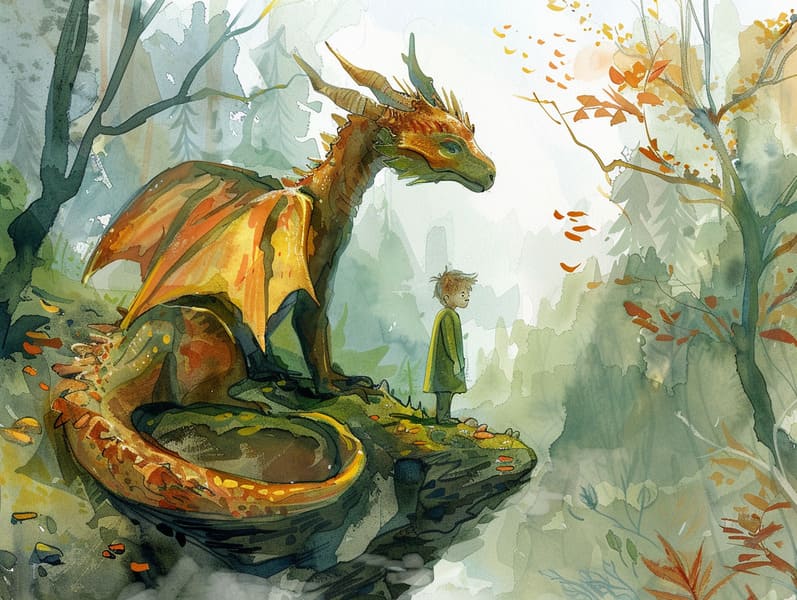Tracing the Heritage of Fairy Tales for Kids with the Continued Allure.
Tracing the Heritage of Fairy Tales for Kids with the Continued Allure.
Blog Article

Famous fairy tales have historical significance. These stories have been spoken from one generation to the next long before they were ever published. They arose from a variety of backgrounds, including Middle Eastern traditions. They were initially disseminated among mature audiences, often carrying themes and messages mirroring the societal norms and beliefs of the time.
Jacob and Wilhelm Grimm, Jacob and Wilhelm, were among the first to assemble many of these beloved narratives. Their published works, "Grimm's Story Collection," included classics like "The Little Glass Slipper," "Little Brother and Little Sister," and "The True Story of Snow White," which have since become classics in the world of children's fairy tales. Similarly, Andersen's charming tales, such as "The Mermaid," and "The Duckling's Story," have gained the love worldwide, securing their place in the pantheon of iconic fairy tales.
Even though they are old, traditional fairy tales remain as important as ever, especially as kids' bedtime tales. These whimsical stories are now available in diverse formats, including colorful picture books, captivating animations, and free fairy tales online.
Their persistent charm can be credited to several delightful features:
Life Lessons: Old fairy tales often offer important moral lessons. Tales like "The Story of the Boy Who Cried Wolf" teach the benefit of sincerity, while "The Tale of the Tortoise and the Hare" show the merits of tenacity and modesty. These tales offer little ones clear distinctions between good and bad, guiding their moral compass in a subtle yet impactful way.
Compassion and Insight: Timeless fairy tales frequently present beings facing challenges and struggles, inspiring young listeners to understand with their struggles and boost their triumphs. For instance, "The Story of Beauty and the Beast" points out the significance of valuing inner qualities to know the true nature of a soul, strengthening insight and knowledge.
Cultural Recognition: Many classic fairy tales are steeped in the cultural contexts from which they were born. Reading these narratives can provide captivating looks into different societies, nurturing a sense of cultural insight and appreciation.
Fantasy and Imagination: The fantastical elements in fairy tales—supernatural elements—inspire children’s imaginative ideas. These stories lead readers to otherworldly realms, revitalizing creative dreams and a sense of awe that stays a lifetime.
Classic fairy tales are not only captivating but also pedagogical. They act as magical tools in enhancing various cognitive and emotional skills in young ones. When fairy tales are narrated, they boost verbal development by bringing new language items and detailed sentence structures. This practice also improves hearing abilities and focus, as the young keep up with the story, enthusiastic to see what happens next.
Furthermore, exploring the themes and characters of traditional fairy tales can nurture logical thinking and problem-solving abilities. Little ones learn to discern patterns, expect results, and catch on to cause and effect. These explorations also boost young readers utter their thoughts and feelings, adding to their emotional intelligence.
In today’s cyber age, the existence of digital storybooks has made these fairy tales more reachable than ever. Internet sites and apps feature broad selections of traditional fairy tales that can be seen or listened through anytime, anywhere. Fairy tales spoken are particularly prevalent, providing an entertaining method for young readers to appreciate these charming tales. Read-aloud stories and narrated videos transport characters and settings to life, often accompanied by enchanting melodies and music that elevate the storytelling journey.
The unfading fascination of traditional fairy tales lies in their ability to alter to new eras while keeping hold of their essential themes. Contemporary retellings of these fairy tales often spotlight more representative protagonists and modern settings, making them accessible to today’s audience. However, the underlying themes of courage, understanding, and justice remain unchanged, continuing to appeal to audiences of all ages.
Ancient fairy tales also offer a sense of peace and predictability. They highlight a orderly narrative with a clear beginning, middle, and end, often wrapping up with the culmination of conflicts and the triumph of virtue over corruption. This foreseeability can be encouraging for kids, granting a sense of reliability in an fluctuating world.
Ancient fairy tales continue to bewitch and train new generations, maintaining their enchantment and meaningfulness in modern society. As children's night stories, they supply a perfect blend of magic and knowledge, sustaining moral values, empathy, and creativity. The accessibility of awesome site free fairy tales online and the widespread nature of fairy tales narrated warrant that these traditional fairy tales remain acquirable to new generations.
By preserving and disseminating these tales, we continue to value the rich tapestry of myths and cultural heritage. Whether you are browsing a vividly illustrated book, seeing a web-based library, or listening via an sound book, the grandeur of famous fairy tales is always within reach. These narratives point out of the invariable impact of stories and its ability to connect us across eras and regions.
No matter if you are experiencing a beautifully illustrated book, accessing a online collection, or listening through an read-aloud book, the radiance of traditional fairy tales is always within reach.
These tales illustrate of the persistent ability of narratives and its ability to bond us across centuries and lands, forging a link that fascinates and enlightens alike.